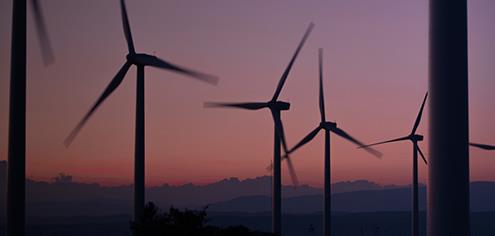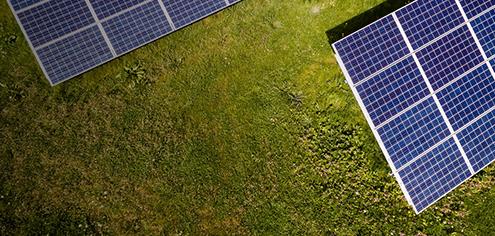Energy from biomass
A global balance between energy demand and production is sought after in the energy distribution network. Twente creates balance by its development of smart solutions, such as the production of pyrolysis oil and gasification and fermentation installations, thus re-using waste and creating new energy sources.

Largest source
When thinking about green energy we think about water, sun and hydro energy, but more than 50 per cent of green energy is generated from biomass. Bioenergy is the collective name for renewable energy made available from materials derived from organic sources, either directly or with a chemical process. Energy can be extracted from biomass through incineration, fermentation and gasification. With smart solutions, Twente is contributing to finding alternative energy sources from biomass. The main question is:
Types of biomass
As opposed to fossil fuels, biomass does not deplete when used. Therefore, it can be seen as a sustainable energy source. Traditional biofuels - such as biodiesel from rapeseed oil or sunflower oil and ethanol produced from sugar beets or maize - are counted among the first generation of biofuels. The second generation biofuels are made from waste materials, such as corn residues or plants that are not suitable for food, such as wood chips. The third generation of biofuels, based on algae and seaweed, is also being developed.
In Twente focussen we ons op innovatieve oplossingen die bijdragen aan een betere wereld voor morgen. Zo zijn we ook dagelijks bezig met het reduceren van energie en onderzoeken we naar mogelijkheden om hernieuwbare energiebronnen in te zetten.

Sustainable fuel

Sustainable construction

Wind energy

Solar energy

Green electricity

Reduce CO2
Urgency
There is a huge energy demand, and its priority has never been higher. There are many questions regarding sustainable energy sources, including:
- How can we find new energy sources and reduce CO2 emissions?
- How can we be more environmentally friendly through the use of biofuels?
- How do we make ourselves independent from exhaustive energy sources such as petroleum and natural gas?
- How do we improve air quality (particulate matter)?
These are real questions without easy answers. It is not without reason that the energy market is perhaps the most innovative in the world. Much has already been achieved to meet the ever-growing energy demand using biomass.
There is no such thing as waste
Products should no longer be seen as waste but as part of a circular economy. Biomass and waste can be converted in many different ways into usable forms of energy such as electricity, heat and gaseous or liquid fuels (biofuels). Cogeneration is usually used to convert biomass and waste into energy as efficiently as possible. Organic fuel is produced by burning, fermenting or gasifying biomass. Like wind energy, solar energy and hydropower, biomass used to produce fuel is a form of green energy.
By incineration
In Twente, we are looking for alternatives to fossil fuels. By developing advanced technology, the spin-off and technology company BTG BioLiquids (BTG-BTL) can convert biomass into bio-oil. Sawdust is converted into vegetable oil by incineration. The oil is a second generation biofuel. BTG-BTL’s installations are designed to process 20 million litres of pyrolysis oil per year. Pyrolysis oil can be used in industrial boilers for steam generation, in heating networks and central heating. It is a sustainable and renewable alternative to fossil fuels.
By fermentation and gasification
With fermentation, also known as anaerobic digestion, wet biomass (waste)streams can be converted into biogas. As one of the major suppliers of bioenergy installations, the Enschede-based company HoST develops fermentation installations, gasification installations, wood-fired cogeneration installations and biomass boilers. HoST has experience with and specializes in the processing of various waste streams from the food processing industry and agricultural (by)products, such as manure, straw, chaff and grass(cuttings). The construction of parts needed for the installation is mostly outsourced to companies in Twente such as Stork, Powerspex, Moekotte and Jotem.
Energy Cooperation “IJskoud” takes a different approach. They consist of seven dairy farmers who have built fermenters on their farms. These installations ferment the daily fresh manure into biogas, which is consequently sold to customers via the cooperation. Customers use the gas to produce heat.


